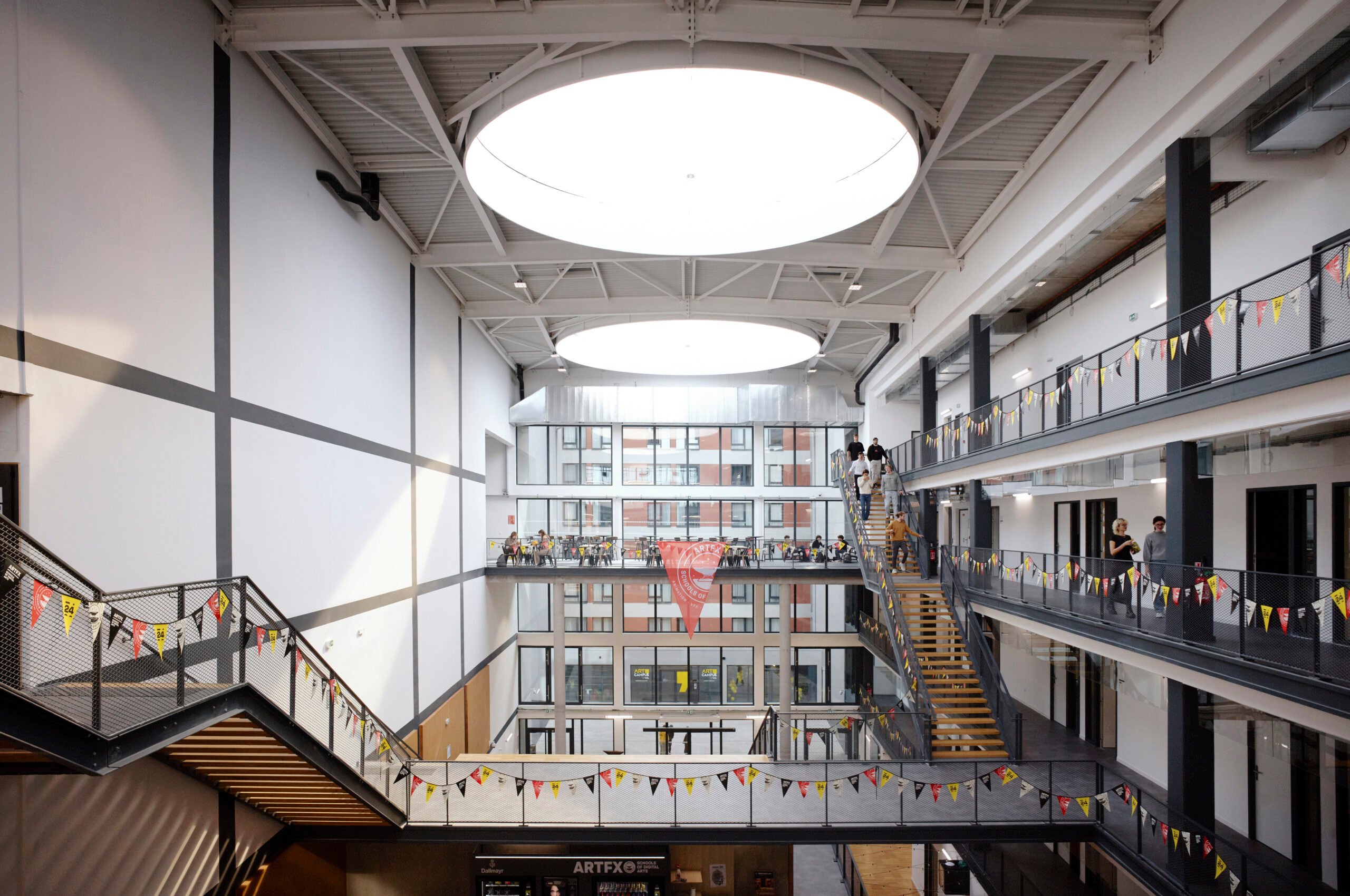
What does it take to produce a next-generation VFX artist who can step straight into a top-tier studio and hit the ground running? At ArtFX, a globally recognised digital arts school based in Lille, France, the answer might surprise even seasoned professionals.
ArtFX has earned international accolades including recognition fromThe Rookies as one of the top creative schools in 2D animation, 3D, and VFX. But its unique approach to education begins not with computers or software, but with pencils, brushes, clay, and analog film. In the first two years (not a typo) of their five-year curriculum, students don't use a computer at all and I've seen it first hand after visiting the futuristic Lille campus.
“Our goal is to help students understand the core principles of visual storytelling before they ever touch digital tools,” says Alex Pagot, Head of ArtFX Lille.
Instead, students learn foundational skills, drawing, painting, sculpture, film photography and physical lighting. This early focus on traditional arts develops an intuitive understanding of form, composition, and light. These aren't just nostalgic exercises; they're essential building blocks for digital mastery and absolutely help when it comes to creating their own digital worlds in later years.

“When you understand how to shape light with your hands, or how to compose a shot through a lens rather than a viewport, you approach digital tools with much more confidence and intention,” adds Charles Chorein, ArtFX’s VFX & CG Supervisor.
This analog-first model has proven successful. By Year Five, ArtFX students are working on complex visual effects projects that mirror professional production environments, equipped with the same expectations, workflows, and thanks to a partnership with ASUS ProArt the same high-performance hardware.

Bridging Craft and Technology
Transitioning from fine art to full scale digital production requires more than just good intentions it demands a technology infrastructure capable of meeting industry standards. As visual fidelity and project complexity have skyrocketed in recent years, so have the expectations placed on graduates going into careers in a space that is experiencing rapid, AI led changes.
“There’s nothing more frustrating than when you’re learning something as a student and then, in your first job, you discover a massive gap between what you learned and what the industry needs,” says Chorein.
To eliminate that gap, ArtFX made a strategic move: working with ASUS ProArt to power every stage of its creative pipeline, from AI supported initial concept design to final color grading. This integration has helped create a production ecosystem that is both robust and realistic.
ASUS ProArt in the Classroom
In the classroom, the ProArt Display PA278CGV is now a standard feature at student workstations. These displays combine color accurate output with a fast 144Hz refresh rate, ideal for real-time software environments like Unreal Engine, Nuke, and DaVinci Resolve. Full ergonomic adjustability ensures comfort during long hours of concept development, technical execution, and iteration.
In addition to displays, students are also using ASUS MuseTree, an AI-powered image-generation platform that aids in previsualisation and moodboarding. For young artists transitioning from sketches to CG, this AI support tool acts as a powerful ideation partner.
Training on Set: Virtual Production
ArtFX also boasts a fully functional on-site virtual production studio where students work with professional cameras and LED stages. Here, ProArt Display PA24US monitors serve as a 4K HDR reference displays with SDI input, capable of receiving real-time camera feeds from industry standard gear like the ARRI Alexa 35. Students at ArtFX Lille really do have access to the best equipment used by professionals.
To handle the data load and software demands, the school uses ASUS NUC 14 Performance mini-workstations, portable yet powerful enough for real-time rendering and asset manipulation. The NUC units’ compact form factor allows students to simulate the real world demands of on set virtual production without compromising on performance.

Finishing with Precision
For final delivery, color grading, and finishing, ArtFX students rely on a combination of ProArt Creator Workstations and the PA32UCXR display, a 32-inch 4K HDR mini-LED monitor with an impressive 1,600 nits peak brightness and a 1,000,000:1 contrast ratio.
These displays are paired with workstations powered by NVIDIA RTX 4060 GPUs and optimised thermally for quiet, high efficiency rendering. The end result is a post-production environment where students can grade and finish their projects with precision matching the standards of top post houses.
“Working with ASUS is great because we always have the latest and greatest tools. It matches the standards in the industry,” says Chorein.
From Classroom to Studio Floor
The outcomes speak for themselves. ArtFX graduates consistently land jobs at top-tier studios around the world, often stepping directly into high responsibility roles. Much of this success is owed to the school’s dual focus: mastering foundational, artistic craft first, and then executing that craft with the same tools and workflows used in the professional world.
This full-spectrum approach to education, from sculpture to final render, is rare, and increasingly important in an industry driven by both creative integrity and technical precision.
“We’re not just teaching students to use tools,” says Pagot. “We’re teaching them how to think like artists, how to collaborate like professionals, and how to adapt to a constantly evolving industry.”
A Model for the Future
For other creative schools and faculty leaders, ArtFX presents a compelling model: that the future of VFX, 3D, and digital filmmaking may begin with clay and charcoal, and culminate in the glow of a calibrated HDR display. The message is clear: digital excellence is built on analog foundations.
I have visited many film and VFX schools all around the world in my time here at RedShark and one thing is becoming ore apparent, it is important for the film and VFX industries continue to blur the lines between real and virtual, practical and simulated, schools like ArtFX are preparing a generation of artists who can navigate both worlds—fluidly, creatively, and professionally.
Tags: Post & VFX Monitors Virtual Production Education ARRI ASUS ASUS ProArt filmschool
.jpg?width=3834&height=2561&name=PLN08837-edit%20(1).jpg)


Comments